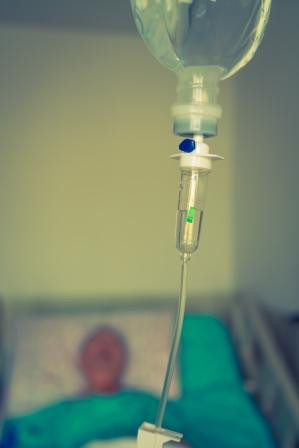
HOW CHEMOTHERAPY WORKS AGAINST CANCER
Friday, November 8, 2019Chemotherapy is also known as chemo for short. Using of medicines or chemical drugs to fight cancer is termed as chemotherapy. It is the first line of treatment to fight cancer. The present day chemotherapeutic substances are less cytotoxic in nature, compared to earlier versions and target the abnormally expressed proteins in cancer cells.
Chemotherapy is used to
- Kill the existing cancer cells.
- Prevent malignancy from progressing to other parts of the healthy cells and treat cancer
- Prevent re-growth of cancer cells
Chemotherapy is used to treat all forms of cancer. Depending upon the prognosis of the patient chemotherapy as a stand-alone treatment may be sufficient or is used alongside radiation therapy or other forms of cancer treatment, to make the treatment more effective.
Chemotherapy is used to make a cancerous tumour small in size before the surgery to remove it and is known as neoadjuvant chemotherapy.
In certain cases, even after surgery or radiation therapies, some cancer cells continue to exist. To kill the remaining cancer cells adjuvant chemotherapy is sought after.
How is chemotherapy administered?
Chemotherapy is administered in the following forms
- Oral: Anti cancer drugs are given as tablets or capsules or liquid that can be swallowed. Altretamine, Asparaginase, bleomycin, busulfan, carboplatin are some of the generic drugs used in chemotherapy.
- Injection: The same medicines are available as metered doses, which are injected as a shot in the arm or the back muscle.
- Intravenous: The Medicines are directly administered into the vein through a catheter.
- Intrathecal: The medicine is injected in the area between the tissue layers covering the spinal cord and the brain.
- Intraperitonial (IP): The target area for the chemotherapy is the peritoneal cavity.
- Intra-arterial (IA): The Cancer ridden artery is injected with the chemo drug.
- Topical: Chemo drugs are available as creams that can be applied on the skin surface.
Your doctor examines you thoroughly and decides the kind and mode of chemotherapy to be administered. Chemotherapy is usually given in a cyclical order, for example 1 week of treatment followed by 2 to 3 weeks of rest for the treatment to work effectively. The number of cycles depends on the stage of cancer. Every individual responds uniquely to chemotherapy. Recovery may depend on the age and other underlying allied health conditions.
The effectiveness of chemotherapy is visualized through periodical investigations such as blood tests, CT scans, MRI’s or any other diagnostic procedures.
Chemotherapy does have certain side effects which disappear gradually. The potential side effects may include:
- Weight loss
- Loss of hair or alopecia
- Darkening of the skin
- myelosuppression or decreased production of blood cells
- Mucositis or inflammation of the lining of the digestive tract
The cancer specialists take into consideration such potential risks while administering chemotherapy and advice you how to overcome the same. They may suggest changes to diet or allied medications to cope chemotherapy treatments. Chemotherapy treatment may require you to stay in the hospital in certain cases or you may visit the doctor as an out-patient depending on the condition.
Many individuals carry on their day to day activities like going to office during chemotherapy. However the doctor’s advice must be followed and one must rest to help the healthy cells recover.
Why KIMS?
- Pioneers in revolutionizing cancer care treatments in Hyderabad
- Best doctors with expertise in administering chemotherapy
- Individual attention and personal care
- Psychiatric help and counseling is given to the patient to cope the treatment
- Family members are counseled on how to take care of the patient
- Emergency care with well equipped life saving equipment
- Satisfied patients with positive outcomes